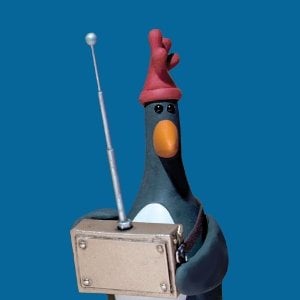It’s time once again to bang my head against the wall of Linux gaming to see if I can make the switch from Windows. What’s the flavor of the month for gaming distros for a Windows native that’s not a moron but also wants something that just works once its set up?
Bonus points if you can point me at resources for how to put Linux on my Windows box as a dual boot without breaking my Windows installation.
EDIT - Tried Mint and Nobara and neither could figure out how to dual boot with Windows on a machine with two physical drives. I’m sure if I had a CS degree I could figure it out in short order but a little googling and messing around trying different things didn’t work so I think I’m done. Maybe next time, Linux.
Imo any distro basically just works the same, I’ve never tried one of the “gaming” distros, but installing steam, proton and lutris is so straightforward that any distro will do imo. From there on it’s just a matter of going onto protondb and figuring out tweaks for your games.
As for dual boot I highly recommend separate drives, windows likes to overwrite grub with every update if located on the same drive. From there on just do a basic Linux install and configure your bootloader to look for other bootable oses
If you’re installing 2 operating systems, always install windows first. It doesn’t play well with other OSs, and will usually overwrite the bootloader.
If you’re installing windows on a separate drive, unplug all the other drivers for the install. I’ve had windows overwrite the bootloader on all 3 drives at the same time.
https://nobaraproject.org/ Nobara is EXCELLENT. It took me weeks to tweak my last distro to get to the point that Nobara is out of the box, and GloriousEggroll sets it all up and keeps it updated for everyone.
As for dual booting, you should be able to follow any online guide (and the Nobara installer might even have an option for it). The only caveat is Nobara does NOT support secure boot, so you may have to disable that in your bios (you can google the benefits of secure boot, I find that for a stationary desktop in the hands of any reasonable user, it’s not necessary. Only reason I ever turn it on is to play Valorant on Windows 11 🙃)
So after a lot of dinking around on two different machines and trying about 6 or 7 different distros, I’ve settled on Nobara and I’m really into it. It does everything I need right out of the box, it looks good, and it just works. I haven’t gamed a ton on it yet, but so far the light-weight games I’ve tried have worked perfectly.
For day to day stuff… linux is there. There’s no reason to use Windows for day to day computing stuff and, if gaming works out, I don’t see why I’d ever need to go back to the Windows boot. I’m impressed.
Anyways, thanks for the recommendation. I have a RL buddy who also recommended this distro. He said it’s a good balance between the slow updates from Ubuntu-based distros and the rapid updates from Arch-based distro. Too slow and your drivers get out of date. Too fast and you get a buggy mess. Makes sense to me.
Yeah this pretty much sums up where I landed after like 8 months of Linux desktop usage. The only reasons I ever boot back to windows is Valorant (which also requires me to turn Secureboot back on… I should just stop playing that game) and whenever I need to compile programs for Windows. But I’m gonna fix that second problem by turning an old laptop into a Windows build machine that I can access remotely.
Honestly, I’d say overall my experience with Linux desktop has actually surpassed Windows. KDE just runs snappier in every way and the app ecosystem you can access via flathub is so vast and polished. Everything feels like it has a lot of care going into it. Windows-only programs with no good Linux alternatives still exist, but for my use case I no longer have that problem.
Random update: I had to swap to Pop!_OS because some games were having issues with the hybrid graphics on my laptop. I couldn’t figure out how to get it working in Nobara but Pop supports hybrid Nvidia graphics (because the company that makes Pop sells laptops with hybrid graphics). It took a little longer to get Pop working as well for me as Nobara was, but so far so good.
I really don’t like the desktop environment as much but I’ve got it working well enough and I’m getting used to it. I don’t want to mess with it more, trying to install Wayland and whatever, so I’ll stick with what just works.
Yup, at the end of the day, do whatever works. I’ve never had to mess with hybrid graphics but I’d imagine some distros handle it better, as you found. PopOS is great and their next update should he real sweet (they’re developing their own Desktop Environment in-house).
While Linux Mint may not be designed specifically for game compatibility, it is quite user friendly. The default desktop environment (cinnamon) feels a lot like windows.
It behaves in much the same way as other distros for steam games (check protondb for compatibility). I can’t say how well it works for other games as I haven’t tried.The Linux Mint installer is fairly intuitive and easy to use. There is an option to install alongside your existing OS, and the included GRUB bootloader will let you select which OS you want to boot each time you turn on your computer.
I’ve tried many different distros, but I keep coming back to Mint for it’s user friendly feel, and simple customisation options.
If I dual-boot first but decide later down the road to switch fully to Linux, is it easy to convert it from dual-boot to single-boot?
Yes. You can use gparted to delete the windows partition (remember to back-up files first), then resize the Linux partition to take up the entire drive.
Grub should automatically detect that windows has been removed. If it doesn’t, you can edit the Grub config fairly easily to tell it to not show options on boot, just boot straight into Linux.
There is also an option to remember the last OS booted, and if no button is pressed for 10 seconds during boot, it will continue to that OS.
I apologize, but I am still very much a Linux noob and so I don’t understand how to use gparted. I know what it is, but my ignorance in its operation frightens me to use it, for fear of fucking up my system…
That being said, I am no stranger to learning new things. Do you know of any good beginner-friendly guides on using gparted?
Not that I can think of. Gparted is fairly self explanatory, and playing with it in a virtual machine is a safe way to practice and learn.
I recommend installing VirtualBox, then booting a Linux Mint iso in it. (If you only have 32 bit OS options, check if you bios supports hardware virtualisation, and turn it on). The live disk has gparted installed by default. You can play with it a bit, and anything you do can only affect the virtual hard drive.
If you install Linux Mint in the virtual machine (remember to remove the iso from the virtual machine after installing or it will keep booting from the iso), you’ll have to install gparted from the package manager. You can then see what an installed OS looks like in gparted. If you make a major mistake, the worst that can happen is you destroy the virtual hard drive. In that case, just delete the virtual machine and make a new one.
If you need real-time help, you
can’tcan contact me on discord (same user name).can’t
Was that a typo?
And thank you. :)
No one suggests openSUSE Tumbleweed?
I use this distro as a workstation OS, laptop for newbie (my wife), for gaming (through steam client, but also with Heroic Game Launcher for GOG and Epic stores) and developing.
It’s a rolling release, so I can get resonable updated kernel and graphics drivers, but it’s also an enough stable distro.
Give it a chance ;-) And if you want a more stable release, instead of a rolling release, try openSUSE Leap.I can second Tumbleweed. Super stable “just works” distro. If Nobara didn’t come packaged with almost everything I need, it would be my go to OS
I run pop os and it’s been flawless. Every game I’ve gone to play has worked great. I’ve tried for 15 years to make the switch and something always holds me back. Not this time, Linux has come a long way and there is nothing windows had that I miss.
Same here, PopOS is amazing!
Agree with other folks that many distros “just work” at this point, but +1 for PopOS. Been using it for gaming for a year now, first with nvidia and then later with the (easier) AMD.
OpenSUSE Tumbleweed. It is a rolling distro like Arch but has automated testing of packages, and has been extremely stable in my experience. It’s great for gaming because you get all the latest software very quickly after release. According to my observations TW receives updates on average quicker than Arch.
Graphical setups usually have options for dual boot. Pretty much any distro works once they’re set up. And setup is not hard on any imo, most download the appropriate drivers automatically at install so you only need to install Steam and it handles proton.
What left a sour taste the last time?
deleted by creator
Just use Manjaro KDE. It has “Install alongside” option during installation if you don’t wanna remove Windows. Also Newbie support and gaming performance is excellent.
Looking into Manjaro, it sounds like it’s kind of known for having issues with reliability. Seems like that might not be the best pick for something that “just works”. But I’ve heard good things about Arch so I don’t know.
If you want the “it just works” Linux gaming experience Garuda Gaming edition installs pretty well configured out of the box.
I haven’t had to do any weird hacky stuff to get my goods working, but I also don’t play online, and mostly on older games at this point, but Jedi Survivor worked OOTB.









